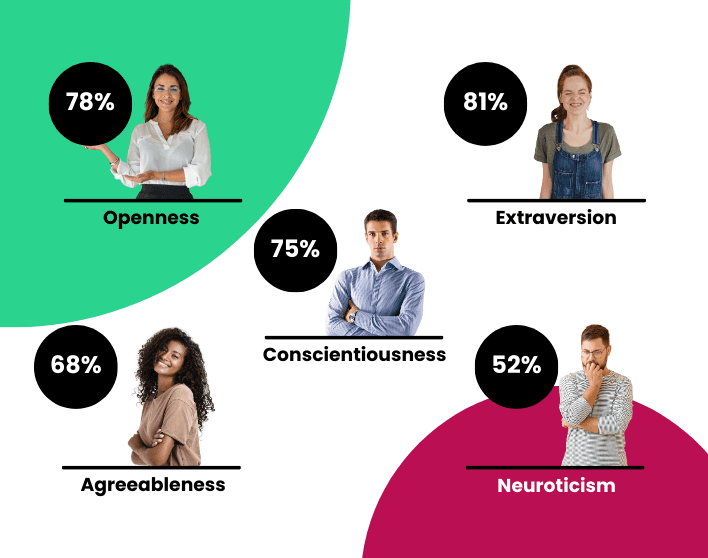The Bryq Team
HR Experts
Workforce planning is a crucial, but often overlooked, part of any business. In this article, we will unpack what it is and how you can create an effective workforce planning strategy.
What is Workforce Planning?
Workforce planning is all about planning the future of your workforce so that you have the right staff with the right skills in the right place at the right time. Sounds like a lot to think about, right? Well, it is! But with some strategic workforce planning for the future, it quickly becomes much easier. It’s all about thinking about who you need before you need them. This keeps staffing levels at the right amount without too many or too few staff. Plus, the people you have in roles will be the people with the right skills required to do the job.
The Workforce Planning Process
The main thing you need to consider when you begin workforce planning is the business goals and business strategy. Workforce planning must be in alignment with your organisation’s long term goals or it will simply be a waste of time and money.
For example, perhaps your company aims to double its revenue in the next 5 years. How many more staff will you need for that to happen? What are the skill gaps in your workforce that you need to address for this to occur?
Steps to Create a Workforce Planning Strategy
We have broken down the task of creating a workforce planning strategy into just three easy steps. In only three steps you will be able to take control of talent management and understand the talent acquisition you require. You will be able to use a data-driven method to create an effective workforce that aligns with your goals.
Step 1: Analyse Your Current Staff
First of all, in the workforce planning process, you need to use people analytics to understand the current formation of your workforce. Your human resources team should be able to help by providing some data on the employees in your business environment.
There are two main questions that you will need to answer:
What is the quality of the workforce?
When you consider the quality of your workforce, it’s about how they are performing currently and what the potential is for them to perform better. This is where the heart of talent management lies. You need to be able to spot those top performers with the potential to go further. These are the people you need to promote or offer opportunities to. They are worth investing in.
Consider what the organisational strategy is and what the future of your company needs. Are there people that you can train up to perform in the new direction the company wants to head? For example, if an IT company wants to branch out into SEO marketing services. In this scenario, you will need people who are trained and knowledgeable about SEO marketing.
What’s the number of people that you currently have in the organisation?
It’s common for HR teams to keep track of staff through a personnel flow matrix. This takes into account not only new staff but also promotions and turnover. It would usually be divided into categories by the level of the position. For example, top management, middle management, team leader, and employee.
This is a great method for spotting any anomalies in the workforce. For example, an extremely high turnover of middle management will be easy to notice. Then you can start to look into why this might be. Maybe they are not given enough responsibility by top management or see no chance of eventual promotion at the company.
Filtering by the department is also useful. Perhaps the main turnover is in IT, customer service, or another area. It is vital that you investigate the reasons for this and knowing where it is occurring is a great place to start.
Step 2: Define Future Goals
After completing step one, you know the current state of your organisation. Now it’s time to think about the ideal future state. You will have your organisational strategy to lead you in the right direction, but you also need to consider external factors. You never know what’s going to happen in the industry and who your competitors will be in a few years.
First, define what your future goals are. Where do you want to be in 1, 3, 5, and 10 years? If your company wants to branch out into other industries, you will need the people to make this happen. If you want to make more sales, you need to provide your people with training to help them perform better.
You should also do a survey of your company’s strengths, weaknesses, opportunities, and threats. This is also known as SWOT analysis. This will give you an insight into any factors that may influence whether your company reaches its goals or not.
Step 3: Compare Your Current Situation to Your Future Situation
Take a look at where the workforce of your business is currently at and where it needs to be. What is the difference? Where are the gaps? Now, you can start to lay out a plan to get your business from its current state to the thriving future state that you have planned for it.
Remember that you need to monitor how your organisation is tracking towards its future goals. Implement the strategies that you think you need to now. Then, in a few months, you can take a look to see whether you think that your strategies are working. For example, if you provided staff training that you expected to make your staff more productive – did this happen? If not, why not? It is through this constant analysis and monitoring that you can keep your company on the right path to meet its goals.
Now that you know how to create a workforce planning strategy, what are you going to do with it? Those companies who are not driven towards success may put it on the back burner and be surprised to find that they fail. Other businesses who create an effective strategy and constantly analyse and tweak it are far more likely to hit their goals.








